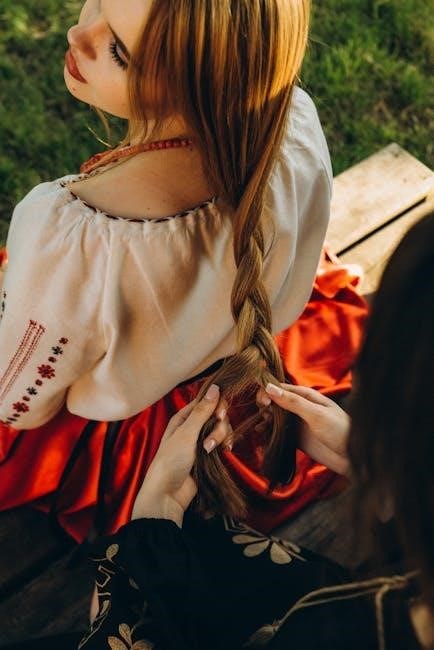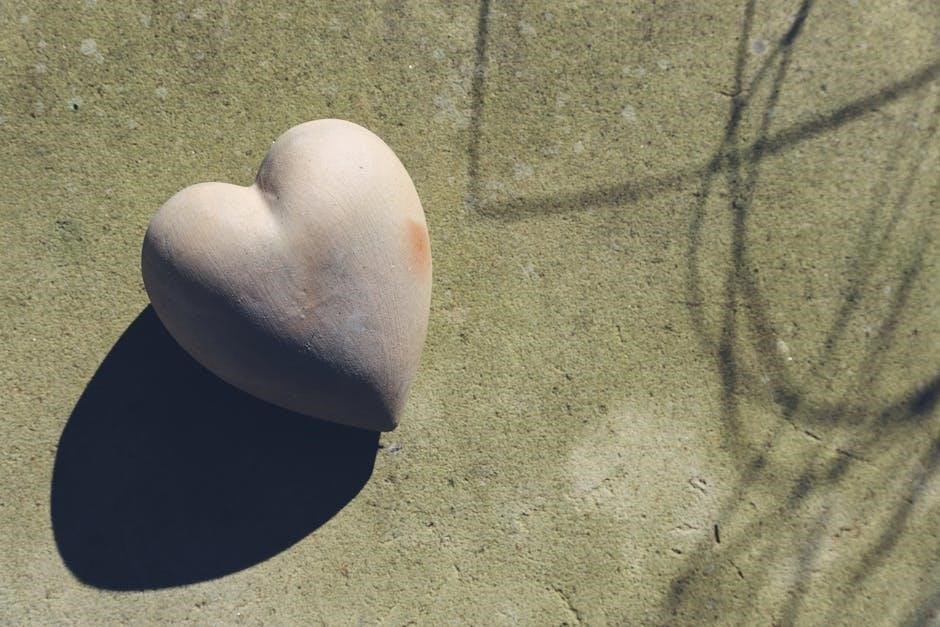embroidery placement guide
Category : Guide
This comprehensive guide aims to provide you with the knowledge for achieving impeccable embroidery placement. From common placements to handy tips‚ this guide will ensure your embroidery looks polished and perfectly aligned. Proper design placement will vary‚ so consider size and shape.
General Principles of Embroidery Placement
Embroidery placement is a critical aspect of creating visually appealing and professional-looking embroidered items. Several general principles guide successful placement‚ ensuring designs are balanced‚ legible‚ and enhance the garment or item’s overall aesthetic. First and foremost‚ consider the garment’s structure. The way a shirt is made may affect the yoke‚ but 2 to 3 inches down from the yoke is a general guideline. Observe balance by starting to work from the center to the design.
Proper design placement will vary by project. While this guide is a great starting point‚ we suggest that you print a paper template of your design to aid in visualization. Consider the size of garment and shape of design. Generally‚ the top of the design should be 3 1/2 ⸺ 4 1/2 inches from garment neck‚ centered between left and right seams.
A key principle is to maintain balance. Center the design horizontally and vertically‚ considering the garment’s seams‚ edges‚ and any existing design elements. The goal is to achieve a harmonious composition where the embroidery complements the garment rather than overwhelming it.
Embroidery Placement on T-Shirts
T-shirts offer a versatile canvas for embroidery‚ but strategic placement is key to creating appealing designs. The most common placement on a T-shirt is the left chest‚ often used for logos or small designs. A standard guideline for left chest embroidery is approximately 6 inches down from the shoulder seam and 4 inches from the center of the shirt. However‚ this can vary depending on the size of the shirt and the design itself. If the T-shirt has pockets‚ aim to place the design a half inch down from the top.
Alternatively‚ designs can be placed in the center of the chest‚ on the sleeves‚ or across the upper back. When centering a design on the chest‚ ensure it is equidistant from the left and right seams‚ and positioned at a comfortable height that doesn’t feel too high or too low. Consider the overall size of the T-shirt when determining placement‚ scaling the design accordingly. Proper design placement will vary by project.
For sleeve embroidery‚ smaller‚ simpler designs tend to work best. Placement on the upper back is ideal for larger‚ bolder designs‚ allowing them to be easily visible. Ultimately‚ the best embroidery placement depends on the specific design and the desired aesthetic.
Embroidery Placement on Polos
Polos‚ with their structured design‚ demand a precise approach to embroidery placement. The most popular location for embroidery on polos is the left chest‚ offering a professional and classic look. The standard industry guideline is approximately 7 to 9 inches down from the left shoulder seam‚ centered between the placket and the side seam. An alternative measurement is 4 to 6 inches to the left of the center.
This placement ensures the design is visible without being too close to the collar or interfering with the buttons. When dealing with polos that have pockets‚ the design should be placed either above the pocket or directly on it‚ depending on the pocket’s size and shape; If embroidering on the pocket itself‚ make sure the design doesn’t impede access or functionality. Also‚ yoke of shirts has many variables and it depends on how the shirt is made.
Consider the size of the polo when determining the appropriate scale of the embroidered design. A design that’s too large can overwhelm the shirt‚ while one that’s too small may get lost. Always test the placement on a similar garment before committing to the final embroidery.
Embroidery Placement on Hats
Hats present a unique set of challenges and opportunities for embroidery. The most common placement is on the front of the hat‚ offering maximum visibility. However‚ side and back placements are also popular‚ depending on the design and desired aesthetic. When embroidering on the front‚ the design should be centered both horizontally and vertically. The size of the design should be proportionate to the hat’s front panel‚ avoiding distortion or crowding.

For curved hat panels‚ it’s crucial to use a specialized hoop that can accommodate the curve‚ ensuring the design doesn’t warp during the embroidery process. Side placements typically work best with smaller‚ simpler designs‚ while back placements are often used for website addresses or social media handles.
Consider the hat’s material when choosing your embroidery threads and needle size. Thicker materials may require heavier threads and a larger needle to prevent breakage‚ while delicate materials may require finer threads and a smaller needle to avoid damage. Always test your embroidery on a scrap piece of the hat material before starting on the actual hat.
Embroidery Placement on Jackets
Jackets offer a versatile canvas for embroidery‚ allowing for various placements to create unique and personalized designs. The most common locations include the left chest‚ back‚ sleeves‚ and collar. For left chest embroidery‚ a standard guideline is to position the design approximately 6 inches down from the shoulder seam and 4 inches from the center.

Back placements can range from small designs at the nape of the neck to large‚ statement-making pieces that cover the entire back. When embroidering on the back‚ ensure the design is centered and proportionate to the jacket’s size. Sleeve embroidery is often used for logos or decorative elements‚ typically placed on the upper arm or cuff.
Collar embroidery can add a subtle touch of personalization‚ with designs usually placed on the collar points or along the collar band. Consider the jacket’s style and material when determining the best placement and design size. Thicker materials may require heavier threads and needles‚ while delicate fabrics may need finer threads and needles to prevent damage. Always test your embroidery on a scrap piece of the jacket material first.
Embroidery Placement on Towels
Embroidering towels adds a personalized and luxurious touch‚ making them perfect for gifts or enhancing your home décor. The standard industry guideline for single design placement on bath towels is centered 3 inches above the border. For hand towels‚ the design placement is similar‚ ensuring consistency within a set.
Consider the size and style of the towel when determining the appropriate design size. A general rule is to keep the design proportionate to the towel’s overall dimensions. For example‚ a larger bath towel can accommodate a more substantial design‚ while a smaller hand towel requires a more delicate and compact embroidery.
When embroidering towels‚ it’s crucial to use a stabilizer to prevent the fabric from shifting or puckering during the stitching process. Water-soluble stabilizers are a popular choice‚ as they dissolve easily after embroidery‚ leaving a clean and professional finish. Hooping the towel correctly is also essential to ensure even tension and prevent distortion. Avoid over-tightening the hoop‚ as this can damage the fabric. Always test your embroidery on a scrap piece of towel material first.
Measuring Techniques for Accurate Placement

Accurate measurement is paramount for professional-looking embroidery. Precise placement elevates the final product‚ ensuring symmetry and balance. Begin by identifying the garment’s center point. For shirts‚ this is typically halfway between the side seams and the neckline. Use a flexible measuring tape to find these midpoints accurately.
For left-chest placement‚ a common embroidery location‚ measure down from the shoulder seam. Industry standards suggest approximately 6-8 inches. Horizontally‚ position the design between the center line and the sleeve seam. Mark these points with tailor’s chalk or a water-soluble marker to ensure visibility during the embroidery process.
When dealing with curved surfaces like hats‚ use flexible rulers or specialized measuring tools designed for curved surfaces. These tools help maintain accuracy when transferring measurements from a flat pattern to the curved surface. Always double-check your measurements before hooping the fabric to prevent mistakes. Using a paper template of the design can also aid in visualizing the final placement and making any necessary adjustments before stitching.

Tools and Aids for Embroidery Placement
Achieving precise embroidery placement is significantly easier with the right tools and aids. A flexible measuring tape is essential for accurately determining distances and center points on garments. Rulers‚ both straight and curved‚ are beneficial for marking straight lines and contours‚ especially on items like hats or collars. Tailor’s chalk or water-soluble markers are crucial for temporarily marking fabric without causing permanent damage.
Templates‚ whether physical or digital‚ are invaluable for visualizing the final design placement. Paper templates can be printed and positioned on the garment to assess size and location before stitching. Embroidery placement guides‚ such as those designed for centering designs on t-shirts‚ can streamline the process and ensure consistency.
Hoops are vital for stabilizing fabric during embroidery‚ and choosing the correct hoop size and type is crucial for avoiding distortion. Additionally‚ laser alignment tools can project a laser crosshair onto the fabric‚ providing a precise guide for centering and aligning designs. These tools can greatly improve accuracy‚ particularly for intricate or multi-layered embroidery projects. Investing in quality tools enhances precision and efficiency in embroidery placement.
Common Embroidery Placement Mistakes and How to Avoid Them
Embroidery placement can be tricky‚ and several common mistakes can detract from the final product. One frequent error is inconsistent placement‚ where designs are not uniformly positioned across multiple items. To avoid this‚ always measure and mark each garment individually‚ rather than relying on assumptions.
Another mistake is failing to account for garment construction. Seams‚ buttons‚ and collars can all affect how a design appears once embroidered. Always consider these features when planning placement. Incorrect sizing is another issue; a design that’s too large or too small can look awkward. Create paper templates to visualize the design’s scale on the garment.
Ignoring fabric type can also lead to problems. Stretchy fabrics require careful stabilization to prevent distortion‚ while thicker fabrics may need adjustments in design density and stitch settings. Rushing the process is a surefire way to make mistakes. Take your time to measure‚ mark‚ and double-check placement before stitching. Proper planning and attention to detail are key to avoiding common embroidery placement errors.
